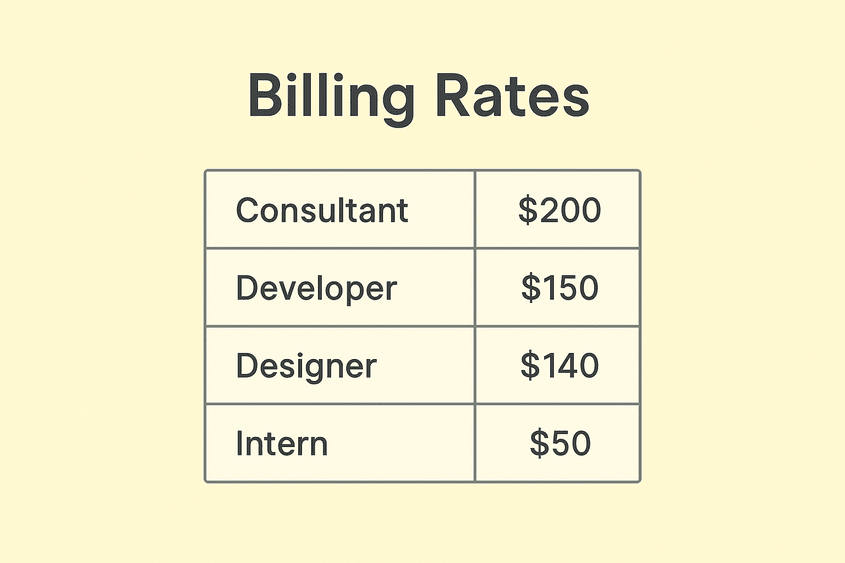Billable Rates
Learn what billable rates are, how to calculate them, and how to set them in TMetric for accurate client billing and project profitability.

What Are Billable Rates?
Billable rates are the fees professionals or businesses charge clients for their time and services, usually on an hourly or project basis. They cover not just wages but also overhead and profit.
Key Points of Billable Rates
- Typically calculated hourly, daily, or per project.
- Include wages, overhead costs (e.g., office, tools, etc.), and profit.
- Ensure businesses cover costs while generating profit.
- Reflect not just cost, but also expertise and client value.
Example of Billable Rate in Use
For example, a consulting firm charges clients $100 per hour for a consultant’s time.
- The consultant works 5 hours on a client project.
- Billable rate = $100/hour × 5 hours = $500 billed to the client.
How to Use Billable Rates in TMetric
Here you will find a step-by-step guide on how to track billable rates in TMetric.
1. Create a project and assign billable rates at the workspace, project, client, or member level
2. Track time with the TMetric timer or log manually
3. Export reports or generate invoices directly
4. Monitor profitability via dashboards
Benefits of Using Billable Rates
- Accurate Revenue Tracking
- Profitability Management
- Time Valuation
- Client Transparency
- Resource Planning
- Business Growth



